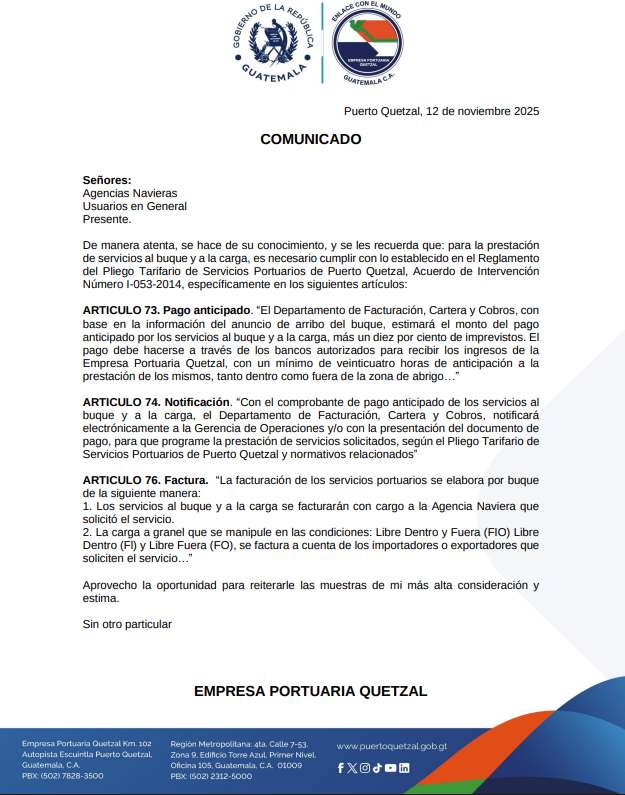The ship in the sea moves according to six degree of freedom: three of translation and three of rotation.
Traslations:
1 Vertical translation movement of ascent and descent: ascent, descent. If there is oscillation: Up and down (by float) or vertical swaying.
2 Movement of lateral translation to one or the other band: rumble or reduction; it can be originated by wind or a maritime current..
3 Longitudinal translation movement: forward or backward movement.
Rotation:
4 According to the vertical axis ‘Z’: Turned or yawed, either by rudder steering or other causes. Also they are used: Fall to the good one (turn according to the helmsman), Fall to the bad one (turn according to the wind).
5 According to the transversal axis ‘Y’: rock or pitch.
6 According to the longitudinal axis ‘X’: Heel. When the rotation is oscillatory: Balance, rolling or wobble..
Empresa Portuaria Quetzal informs about the following situations of the ships.
Docked ships
A dock or mooring is the designated place to dock or moor a boat. That means to immobilize it using the cables, thus parking the ship. A boat can dock sideways (either to port or to starboard), or tip (either prow or stern).
Notified ships
The notice was a military naval unit, usually fast, that transported sheets and orders between different ships. Its purpose was obsolete due to the use of radio systems on warships in the early twentieth century. Currently information is given about the ships that will arrive at Puerto Quetzal.
Anchored ships
It is to fix a boat with an anchor, although it is also called the action of dropping the anchor to the bottom. The anchoring is done in port waters. Each port authority is responsible for charging the current rates.
Set sail ships
They are the boats that go to sea.

